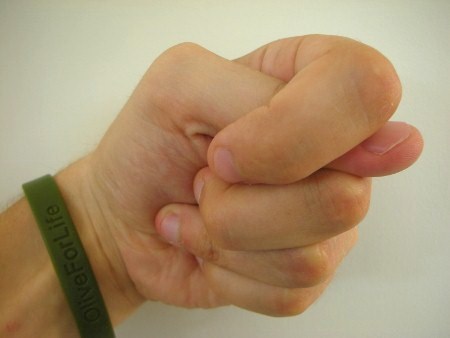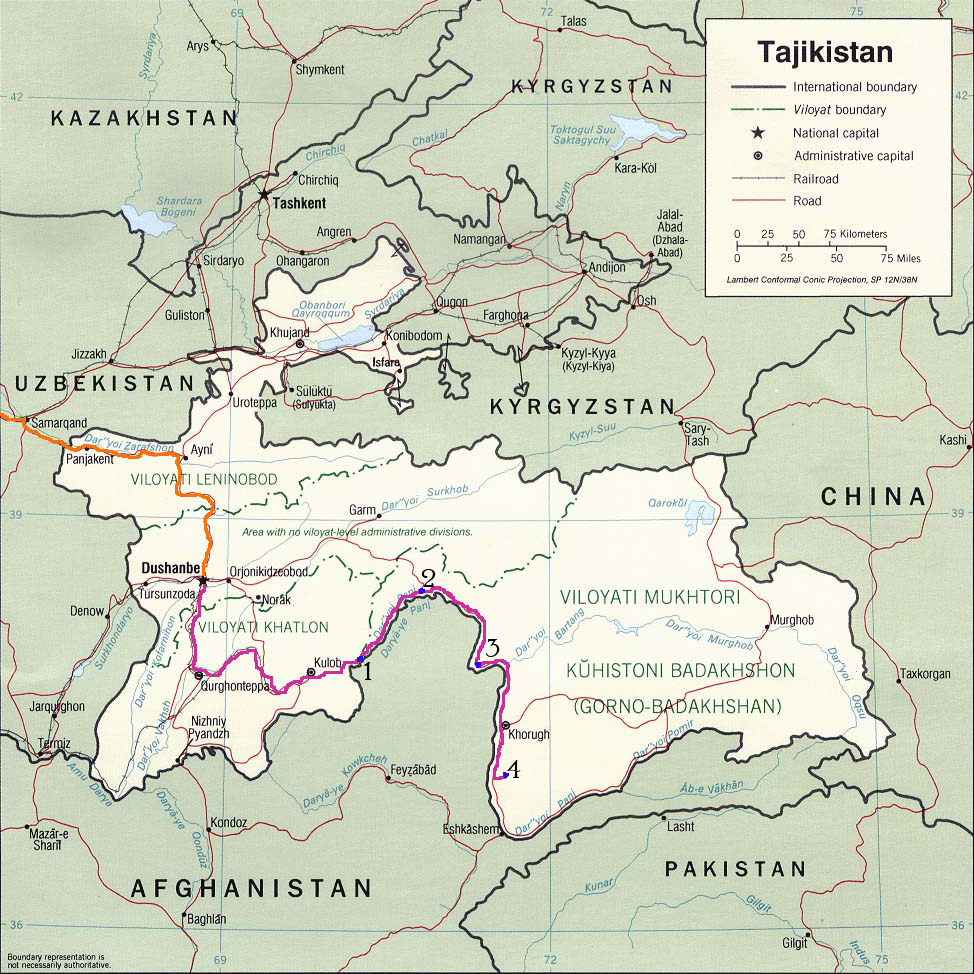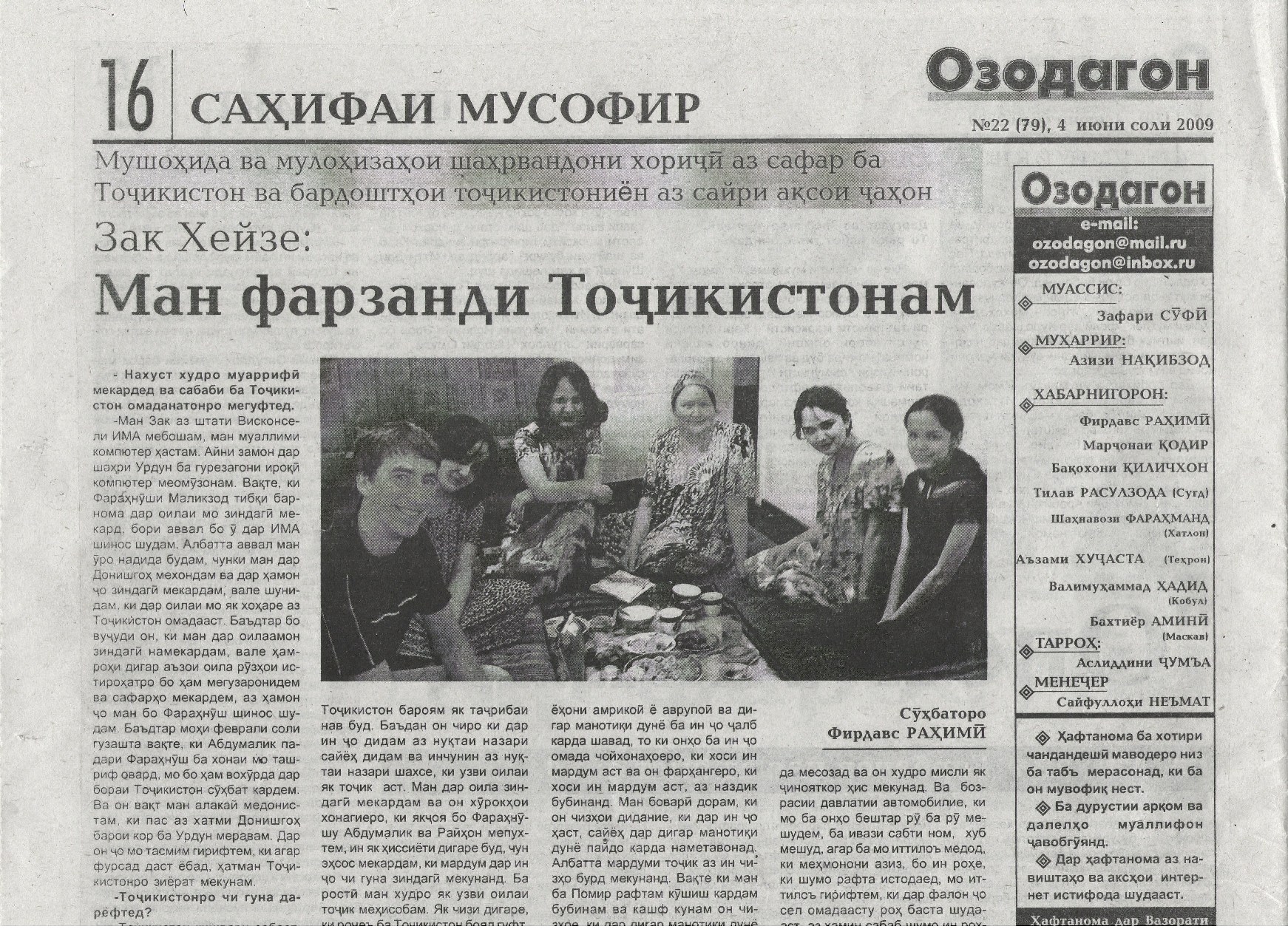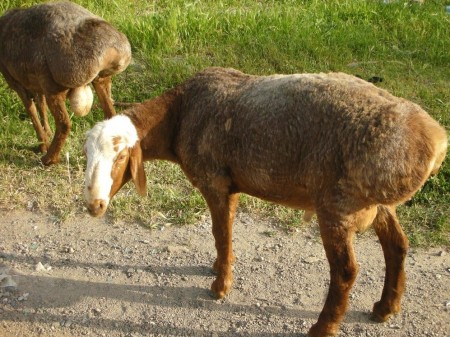On the map above: the purple line represents the actual route we took to get to Khorog. “1” represents the approximate location of the There Will Be Mud article, “2” is the location of Qala-i-Khumb, “3” is the approximate location of the “Forty Bodies Teahouse,” and “4” is the approximate location of the Hot Springs (Garm ChashMA!). The orange line is the approximate route that we used to get into Uzbekistan.
It’s a been a week now since I returned from my Central Asian vacation, and it’s time for me to stop backdating my entries and set the clock on the blog properly. I’ve been doing some rereading and poring over my old travel entries from my time in Britain in summer 2007, and noticed that they were all much shorter, and without pictures. That probably explains why I was able to easily keep up with day-to-day activity then – in the time since then, my blog has just had its second birthday, and my family and friends’ expectations for my blog has increased. It’s a photography-based internet out there, and 500-600 words of text just won’t cut it anymore.
Besides that, I felt like I had an honor and a duty to uphold to Tajikistan. As the previous blog entry mentions, I’m now an unofficial “Son of Tajikistan” and I want to make sure that this small, proud, and beautiful country gets the recognition that it deserves on the national scope. There are so many opportunities for business and tourism waiting in those mountains and forests; all it needs is a financially-responsible guiding hand a government that embodies the wishes of the people – progress, health, education, and technology. It’s my pleasure to write these copious blog entries in the hopes that readers searching for more information on Tajikistan in particular, or Central Asia in general, can receive an in-depth picture of the area. This means I tried to make my writing honest to my opinions on the country: strong, beautiful people with a fervent wish for progress in their new country, but a corrupt and ineffective executive government that takes the worst aspects of Communism and Capitalism and twists them into a beast in which change and hope die in their infancy.
Speaking of me being a “Son of Tajikistan” – below is a scan from Farahnush of the newspaper article they wrote about me. Of course I’m unable to read it but apparently it was entirely unchanged from what I said – the good and the bad alike. I can’t believe they wrote so much about me, and at the bottom of the second page (which is located here) I’m told it says “to be continued,” I guess they really liked what I had to say.
And, you know, this is happening all over the world. Dozens of countries around the globe suffer daily with outrages and injustice, media suppression, taxation, and emigration snafu. Certainly, Tajikistan isn’t in the same league of difficulties as Palestine, Iraq, the Congo, Darfur, or North Korea, to name a few. But therein lies the problem. A good dictator like President Emomalii Rahmon knows that the key to a successful power consolidation is to be low-key and non-expansive. As long as he doesn’t try to overstep his boundaries of the little country, he can get away with essentially anything he likes and the International Community will overlook it, remaining more concerned with other things. I didn’t speak with a single citizen of Tajikistan who felt that their president had their best interests in mind, or that Tajikistan was seeing the post-Communism changes that it deserves. But most remain hopeful that their future could get brighter if governmental changes were made – not just in Tajikistan, but in many of the former-Soviet countries. For example, President Rahmon has been able to remain in power indefinitely so far thanks to his modification of the constitution that allows him to run, and rerun. He imprisons or exiles political competition when it appears. Such things are apparently so common to the jaded eyes of the United Nations that this isn’t even worth investigating. Yet here the United States is, continuously pouring money into a war into a war in Iraq that Obama cannot control (his military staff says one thing to him, then under their breath says another) and working as Israel’s lapdog to fund a slow but steady genocide against the people of Palestine. Your tax dollars at work. If a large percentage of that was put not into war, occupation, and weaponry but instead research, unbiased news, foreign aid, and diplomats to help Tajikistan and all the others like it, I think a lot more people could sleep more soundly at night. Okay, I’ll get off my soapbox – for now.
So what are some of the differences, similarities, and things that surprised me in Tajikistan?
- The offensive gesture. Farahnush had informed me of this last year when she was in America, but I needed to be continuously reminded of it while in Tajikistan to make sure I wasn’t going to accidentally give someone The Bird (equivalent). Too often I found my hands just naturally did this as I was reading or focusing on something else. The problem is that the offensive gesture in Tajikistan looks a lot like the game we play with children in the USA….Got your nose!

Whatchu say 'bout my mother?!
- The hospitality. Living in Jordan means that I’m always being asked to come over and have dinner or tea with friends, coworkers, and random people who see me on the street. If I had come to Tajikistan straight from America, I might have found highly hospitable, pleasant Tajiks much more different, but instead I’m starting to now see instead that the USA and the Western World in general just isn’t as friendly as Arabs, or Muslims in general. The style of eating in Tajikistan is much like the Arab world – everyone sits around a communal selection of food and often eats by hand. In Tajikistan, though, the presentation is top-notch – we’re talking crystal decanters, beautifully-painted dishes, and brightly colored table coverings and napkins. I mean, no offensive America and Britain, you’re doing perfectly all right for yourselves in other ways but the East has got us beat by a long shot in this department.
- The similarities of Tajik to Arabic. I knew before I arrived that the Tajik language was similar to Farsi and Russian, but from my previous experience with it last year when Farahnush was with my family, a lot has changed, namely my ability to communicate in Arabic. I would chat with Malik in Arabic occasionally, and the rest of the family would look up suddenly if I said something that had an identical or similar meaning in Tajik. According to estimations, Tajik has as much as 60% vocabulary sharing from Arabic, and even 80% from Farsi. The problem though is that the grammar is entirely different, which prevented me from being able to completely use my Arabic skills for easy communication. Darn!
- The beautiful dresses. It’s interesting that you can find peafowl – peacocks and peahens – here in Central Asia, because the sexual dimorphism between the clothing of men and women here is similar. Men there wear Western-style slacks, trousers, and button-down shirts, but the women – the colors and the fabrics are astounding! Like something out of Joseph and the Technicolor Dreamcoat, you can find the long, flowing one-piece dresses called koorta everywhere you go in the country, and in the Silk Road region of Uzbekistan too. Malik explained to me that Central Asian men used to wear Persian robes and turbans as well, but after the Soviet takeover, the men where gradually forced to adapt to a style that used pockets by necessity.
- The golden teeth. I was a little worried about putting this one up here, because I wasn’t sure if it would be considered embarrassing or insulting to bring up, but Farahnush assured me that it was perfectly normal to talk about. But I was surprised and curious to see the amount of golden-capped teeth in Tajikistan – in most adults you could expect to see at least two or three such teeth, but for some people, especially women that I saw in the south and the east, their entire mouths were a solid plate of gold. I was told that the simple explanation for this was that for a long time, gold was a cheaper method of fixing teeth than enamel coverings, which with gold now at almost $1000 per ounce now seems pretty ironic.
- The pleasant social drinking. Coming from Jordan and the strict Muslim world, I thought that Tajikistan, which is also a Muslim country, would be the same: drinking alcohol is haram (forbidden) and is not the norm. However, the decades of Soviet influence and cheap vodka imports has apparently made drinking a much more acceptable thing for the average person to do with friends after work. And those prices just cannot be beat – the lowest I’ve ever seen.
- The toasts before a shot. Unlike drinking in America where a shot is merely preceded by the bartender telling you to pay up, a round of vodka shots in Central Asia must first be eloquently toasted by a member of the group, who in turn describes his happiness with the evening, the good company of his fellows, his hope for the health of their families and for many happy returns. I personally did three or four of these spoken toasts myself, of which one was in Tajik (but it was so badly done I can’t reproduce it here). You mustn’t drink your shot until it has been properly hoisted and toasted!
- The beer in 2-liter bottles. ‘Nuff said here. I was pleasantly shocked when Malik and I went out to dinner in Panjakent and we were served strong Samarqandi beer merely by our waitress setting a 2-liter plastic bottle on our table. America, seriously – what is taking you so long to get on this?
And lastly, for your amusement:
- Goats with odd anatomy: This is a breed of goat I’ve never, ever seen before in America, and I’m from a goat farm. Can anyone tell what type of caprinae this is? I’m suspecting that they’re bred for a particular kind of meat section, but I just can’t figure out which section!edit: my mother points out that it’s actually a sheep, not a goat, but it looks like a Nubian breed more than anything else, which is why I was confused. It’s either a “Turki” sheep or a “Tyrol Mountain” sheep.
Trip statistics
- Total Pictures taken: 1,288
- Total Pictures taken of me (mostly by Malik and the elder Akbar): 140
- Total Pictures deleted because they were blurred from the bouncing, rollicking Niva: 18
- Total beers consumed: 11? (It depends on it we’re measuring by pint or by two-liter bottle)
- Total shots of Russian or Tajiki vodka: 15
- Total toasts to travel, family, business, and friendship: 15
- Cost of flight with Turkish Airlines: 716 Jordanian Dinar ($1010)
- Cost of Tajik Tourism Visa: $15
- Actual cost paid by swindling airport attendant for “Commercial Visa”: $56
- Cost of Uzbekistan Tourism Visa: $159 + $40 express charge = $199
- Cost of two-person tourism to Samarqand and Bukhara with Elaina Tours: $550
- Actual cost paid by me after Elaina Tours realized they had horribly screwed up and not sent the right documents to the border, preventing Malik from entering Uzbekistan: $450 ($100 of which was graciously provided by Malik, even though he wasn’t going, because he wanted to make sure I had enough to get by alone)





I confirm that all the information supplied in this article is true.
According to “Sheep of the World”, there are many “fat-rumped” sheep in Central Asia, with many different names. See “Turki”
Shall we import some back to our farm, mom? I think they look hilarious; I can just see the look on the judge’s face at the fair.
We might have to enlarge barn door openings!
sweet. That sounds awesome.
Are you still going to be around when I get to egypt?
[…] Back in Jordan: A Tajikistan Summary